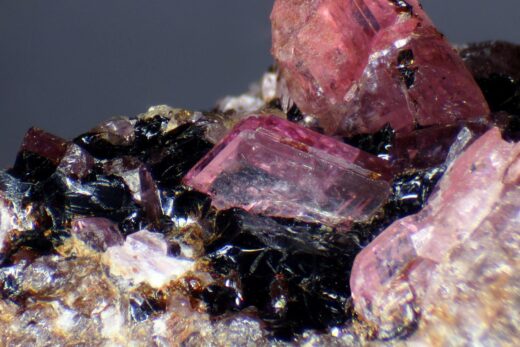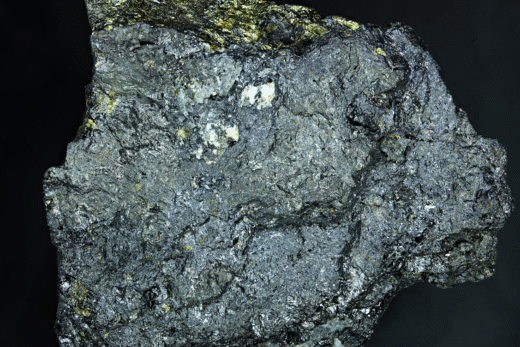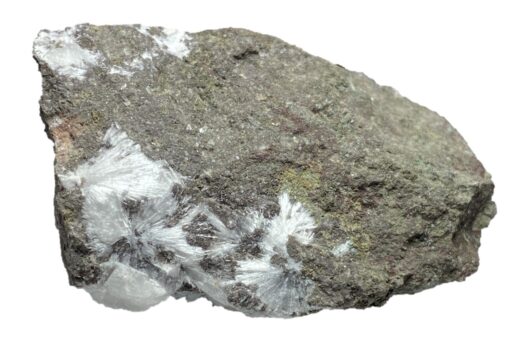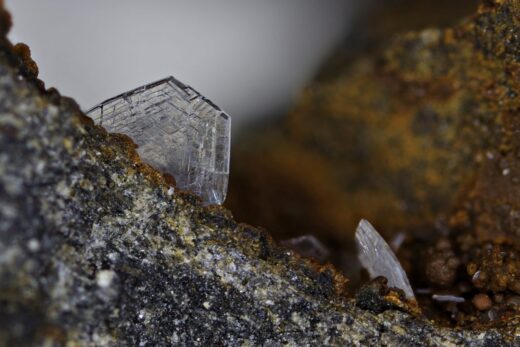Formula: Au
Summary extracted from Alfredo Petrov’s Encyclopedia:
Summary of Occurrence
The Encyclopedia does not contain a dedicated entry for Native Gold. However, information about its occurrence can be compiled from mentions within the descriptions of other minerals. Based on this data, native gold and its natural alloy, electrum, are found across Japan in several distinct geological environments:
- Epithermal Veins: Gold, often as electrum, is commonly found in epithermal quartz-calcite veins, frequently in dark, silver-rich bands known as “ginguro” ore. These occurrences are often associated with a variety of silver minerals and other sulphides.
- Skarn Deposits: Gold occurs in contact metasomatic (skarn) deposits, notably as gold-bearing andradite garnet.
- Kuroko-type Deposits: Electrum is mentioned as a component in Kuroko-type massive sulphide ores.
- Placer Deposits: Alluvial (placer) gold is found in several river systems, often in association with Platinum Group Metals (PGMs) and cinnabar.
- Microscopic & Invisible Gold: Gold is frequently found as microscopic inclusions in other minerals (like aguilarite) or as “invisible gold” within the crystal lattice of minerals such as arsenopyrite, making the host mineral auriferous.
- Visible Gold: While often microscopic, the text notes some rare occurrences of visible native gold, such as gold wires.
Occurrences by Prefecture
- Akita: Electrum is found in epithermal veins at the Innai mine and as a component of Kuroko-type ore at the Furutobe and Shakanai mines.
- Aichi: The Iname (Furikusa) mine contains auriferous arsenopyrite.
- Fukuoka: The Kato mine has microscopic inclusions of gold in aguilarite.
- Hokkaido: Native gold replacing coloradoite is noted at the Date mine. Electrum is found at the Koryu, Sanru, and Suttsu mines. Placer gold occurs in rivers like the Uryuu river.
- Hyougo: Electrum is found in polymetallic veins at the Ikuno and Takeno mines. Gold is also noted at the Nakase mine.
- Iwate: The Kamaishi mine contains electrum and a unique copper-rich gold alloy in its skarn deposit. The Nojiri and Setamai deposits feature gold with telluride minerals.
- Kagoshima: The Hishikari mine is a notable locality for electrum in “ginguro” bands. Gold is also mentioned at the Miyanoura, Tsugahira (Togahira), Iriki, Kasuga, and Kushikino mines in various associations.
- Miyagi: Placer gold is found at Tsuya. Gold was also produced from quartz veins at the Shishiori gold mine.
- Miyazaki: Gold is associated with stibnite at the Shika and Ouchi mines, sometimes as auriferous arsenopyrite.
- Nagano: The Kobushi mine is a notable occurrence where gold-bearing andradite garnet in skarn was commercially worked.
- Niigata: Electrum is found in gold-silver veins at the Sado (Aikawa) and Takachi mines.
- Ouita: Gold is mentioned at the Bajou, Mitsui-Ohtaka, and Mukuno mines.
- Saitama: The Chichibu mine has a rare occurrence of visible gold wires associated with sphalerite crystals.
- Shizuoka: The Kawazu and Rendaiji mines feature native gold and electrum in “ginguro” ore, often associated with tellurium minerals.
- Tokushima: Placer gold was found at Yamashirodani.
- Yamaguchi: Gold is hosted in pyrophyllite at the Agawa mine.
Particularly Interesting Occurrences
- Gold Wires (Saitama): The most visually striking occurrence mentioned is at the Chichibu mine, where dark brown sphalerite crystals were found “impaled on gold wires” indicating the presence of visible, well-formed native gold.
- Copper-Rich Gold Alloy (Iwate): At the Kamaishi mine, a “copper-rich gold exsolution phase” with the approximate composition Au₇₈Ag₃Cu₁₉ is noted, described as potentially being the mineral bogdanovite. This is a scientifically interesting natural alloy.
- Gold-Bearing Garnet (Nagano): The Kobushi mine features gold-bearing andradite garnet in a skarn deposit that was successfully worked for its gold content, an unusual host mineral for commercial extraction.
- “Ginguro” Ore (Kagoshima & Shizuoka): The occurrence of electrum in black, silver-rich “ginguro” bands is highlighted at the Hishikari mine (Kagoshima) and the Kawazu mine (Shizuoka), representing a classic type of Japanese epithermal gold deposit.
- Invisible Gold (Miyazaki): Arsenopyrite from the Shika mine is described as being auriferous and yielding significant gold (23g/t) despite having no detectable gold inclusions under a microscope, a perfect example of “invisible gold”.
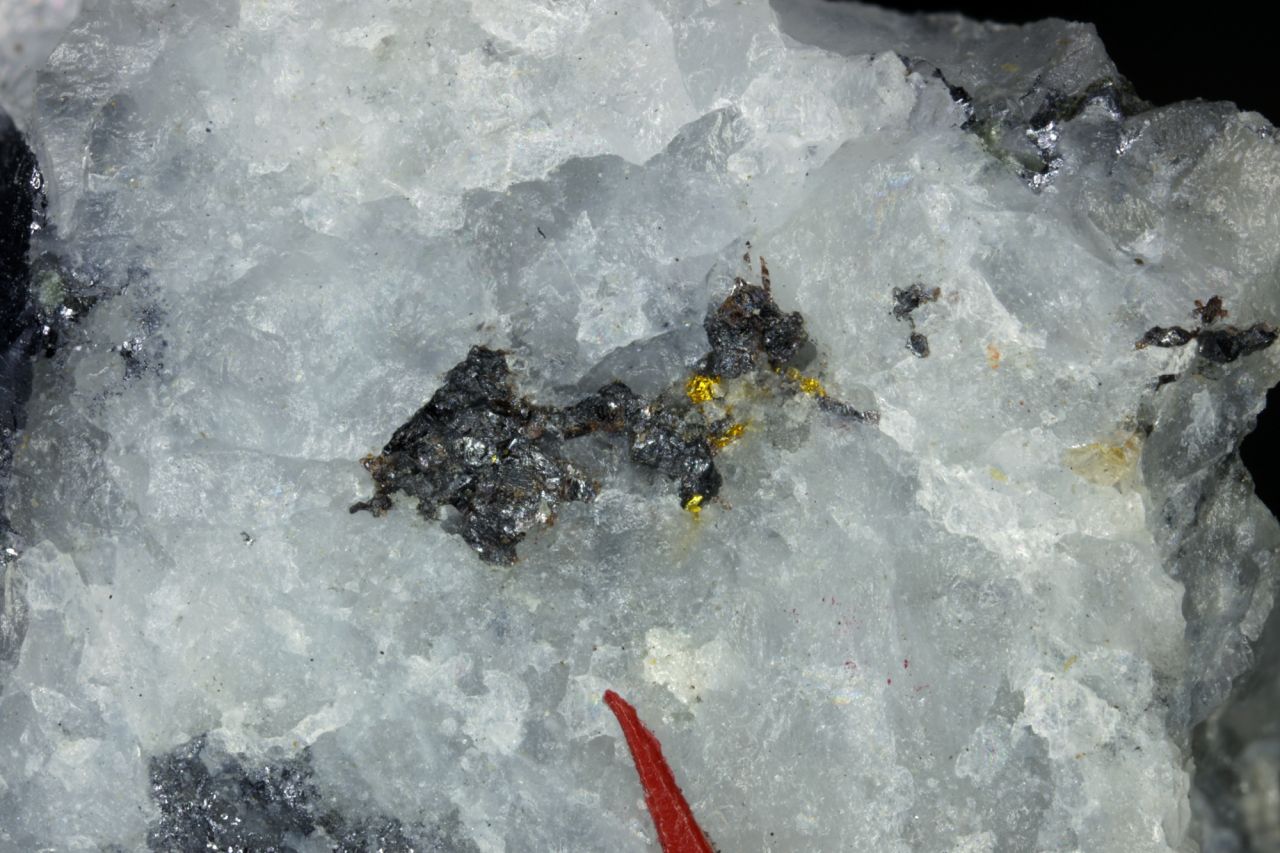
Above: Gold, Sphalerite, Galena, Saigane, Daigo-machi, Kuji District, Ibaraki Prefecture, Japan. Width of view 6mm.
